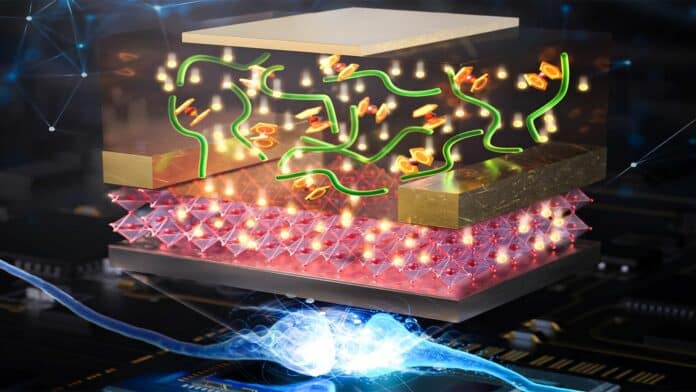Microelectronics, like tiny computer chips, have a big problem: they can get too hot. To fix this while still working well, they need to use less electricity.
Scientists at the U.S. Department of Energy’s Argonne National Laboratory found a solution. They invented a new way to control how electricity moves in and out of a special material used in microelectronics. This technique is called “redox gating.”
“Redox” refers to an electron-moving chemical process. Devices in microelectronics typically use an electric field to regulate the flow of electrons. In this experiment, researchers created a device that could regulate the flow of electrons by passing a voltage across a substance that served as an electron gate. Electrons would begin to flow through the gate from one material to another when the voltage reached a specific point, roughly half a volt.
The device might function as a transistor by varying the voltage, allowing more or fewer electrons to flow.
Argonne materials scientist Dillon Fong, an author of the study, said, “The new redox gating strategy allows us to modulate the electron flow by an enormous amount even at low voltages, offering much greater power efficiency. This also prevents damage to the system. We see that these materials can be cycled repeatedly with almost no degradation in performance.”
Argonne materials scientist Wei Chen, one of the study’s co-corresponding authors, said, “Controlling the electronic properties of a material also has significant advantages for scientists seeking emergent properties beyond conventional devices.”
“The subvolt regime, where this material operates, is of enormous interest to researchers looking to make circuits that act similarly to the human brain, which also operates with great energy efficiency.”
The discovery of redox gating may help develop less power-hungry quantum materials. This methodology may find application in low-dimensional quantum materials composed of sustainable elements and various functional semiconductors.
Argonne’s Advanced Photon Source supported the research on redox gating behavior. Moreover, devices, materials, and electrical property measurements were performed at Argonne’s Center for Nanoscale Materials.
Journal Reference:
- Le Zhang, Changjiang Liu, Hui Cao et al. Redox Gating for Colossal Carrier Modulation and Unique Phase Control. Advanced Materials. DOI: 10.1002/adma.202308871
